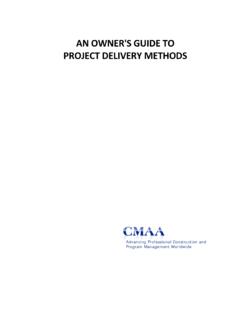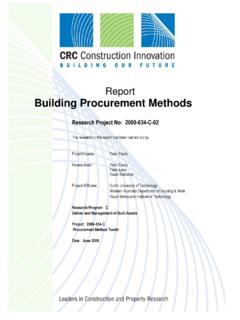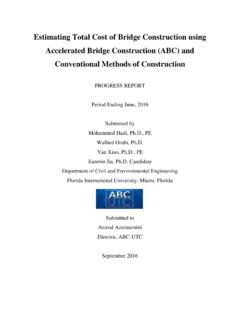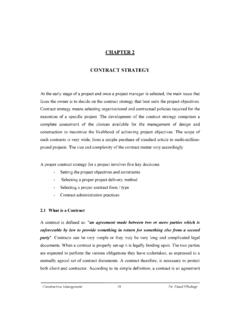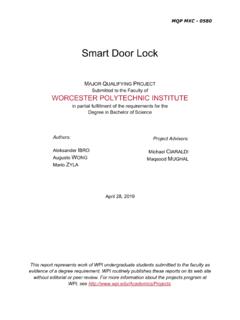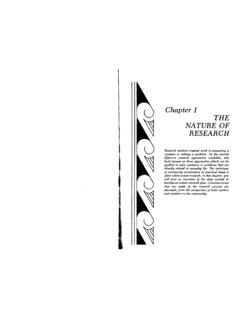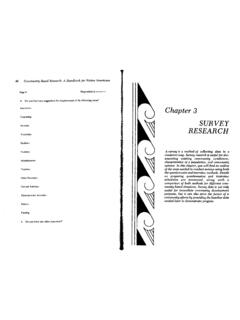Transcription of Notes and guidance: NEA for 2022 only
1 GCSE Food Preparation and Nutrition Notes and guidance: NEA 2022 This is a guide to the Non-exam assessment (NEA) for GCSE Food Preparation and Nutrition. Use it alongside the Scheme of assessment and Non-exam assessment administration sections of the specification. AQA 2021 and its licensors. All rights reserved. 2 of 7 Ofqual changes to assessment for 2022 only NEA1: Food Investigation Task (15%) - to accommodate public health restrictions this task has been removed. NEA2: Food Preparation Task (50%) - will remain as part of the assessment with the following change: To reduce the requirements for NEA2 to 2 dishes to be completed within 3 hours. The assessment and marking requirements remain unchanged. To facilitate the delivery of NEA2, and to enable centres to cover the remainder of the specification, further guidance has been provided.
2 NEA2 Food preparation task Archived tasks and tasks for 2021-2022 can be accessed via the secure site at e-AQA. Please note that archived tasks required students to make three dishes, 2021-2022 requires only two dishes to be made. Teachers must obtain login details via the school s examination officer to access e-AQA. Breakdown of assessment Section Marks available Section A: Researching the task 6 Section B: Demonstration of technical skills 18 Section C: Planning for the final menu 8 Section D: Making the final dishes 30 Section E: Analyse and evaluate 8 Students plan, prepare and cook two final dishes, writing up the outcomes with photographic evidence. Understanding and application of nutritional knowledge will be a requirement of all tasks. There will be no changes to the marking criteria pages 41-47 of the specification.
3 The NEA2 will continue to be marked out of 70 and will now be worth 50% of the final GCSE grade. Section A: Research the task See the section on Research the task in the Scheme of assessment. Guidance for teachers Analysing the task could be through mind-mapping or key words. Research should be concise, relevant and focused. Don t let students spend a disproportionate amount of time on the research to the detriment of other marking criteria. Setting clear aims for each piece of research enables students to focus. The use of prior knowledge should be encouraged. If a questionnaire is used the focus should be on the analysis of the results. A copy of the questionnaire does not need to be included. AQA 2021 and its licensors. All rights reserved. 3 of 7 Students need to consider the dishes they make carefully to enable a good range of technical skills to be demonstrated.
4 The choice of dishes should be fully justified related to the research findings and the task. Guidance to give your students Encourage students to analyse the task and explain what they will need to do to answer the task successfully. Ask them to consider the research they will need to carry out. The research will be focused on either: life stage (young children, teenagers, adults, elderly) dietary group (vegetarians, vegans, coeliac, lactose intolerant and high fibre diets etc) culinary tradition (Mediterranean, Middle Eastern, British, Asian etc). It may be appropriate to collect the information using primary sources (such as interviewing) as well as secondary sources. The research should be concise and purposeful. Summarise the research and identify a range of suitable dishes to make, whilst considering the skills required to make the dishes.
5 Consider a wide range of ideas that could be made, for example, through mind-mapping or annotated images. List the technical skills used in each dish. Recording four to six ideas should allow for a good range of skills using different ingredients and processes. When they have recorded their ideas, students will then need to decide which dishes to make for Section B: Demonstrating technical skills. Select and justify dishes to make that use a variety of technical skills. Students will make up to three of these dishes. Dishes should show different, not repetitive, making skills. The dishes selected should reflect the research findings. Students can make both savoury and sweet dishes. This is an excellent opportunity to experiment, be creative and showcase food preparation/technical skills.
6 Section B: Demonstrating technical skills See the section on Demonstrating technical skills in the Scheme of assessment and marking criteria Guidance for teachers Students should be aware of different technical skills: basic, medium and complex. This could be exemplified throughout the teaching of the specification. Students will be rewarded for the use of a range of technical skills at this stage. The quality of the outcomes produced will also be considered. Selecting unchallenging skills/dishes will prevent students from accessing the top mark bands. Students should have the opportunity to use different equipment, this could be small and/or electrical equipment. Students should provide evidence of a review of their technical skills, through evaluation, and how these skills will be used in the final two dishes.
7 When assessing this section consider whether students: make dishes with a variety of technical skills have selected dishes relevant to the task AQA 2021 and its licensors. All rights reserved. 4 of 7 work accurately and confidently have a very good understanding of the ingredients and processes they are using work independently use equipment skilfully and accurately work safely and hygienically. Guidance to give your students At this stage of their project , students will have the opportunity to experiment with new practical skills, as well as to develop and refine existing skills. choosing which dishes to make can be a difficult task but it s important students select the right ones. Encourage them to ask relevant questions to check the dishes that they decide to make will be suitable.
8 For example: are the dishes a suitable choice for the task and reflect the findings of the research? is there a wide range of skills, processes, techniques and cooking methods? how will the dishes be presented? Make up to three of these dishes for Section B: Demonstrating technical skills. Get students to record the results of their making including: the skills they have used (this can be shown using annotated/authenticated photographs), reasons for choosing the recipes and results of sensory analysis. Section C: Planning for the final menu See the section on Planning for the final menu in the Scheme of assessment Guidance for teachers The two final dishes must not be remakes of the original made in Section B. Students will use their skills to research, modify and create new dishes to answer the task.
9 Look for justification of the appropriateness of the final dishes. For the top mark band, the time plan will show well thought through dovetailing and accurate timings. The time plan will show and explain the food safety principles when preparing, cooking and presenting food and reference to temperatures. Students will use the time plan in the three hour assessment and will be monitored by the assessor. Guidance to give your students After demonstrating a range of technical skills, students will decide on two dishes to make for the final assessment. The two selected dishes may include side dishes/accompaniments; eg Dish1: Chicken curry and rice with flat bread and saag aloo. Dish 2: Fresh fruit mousse with raspberry coulis and shortbread. The final dishes can use some of the same technical skills but can t have been made previously.
10 When students have selected the final two dishes, they will need to give reasons for choosing the dishes. Points that could be considered when giving reasons for choice: suitability for task research findings technical skills and processes AQA 2021 and its licensors. All rights reserved. 5 of 7 cooking methods sensory properties (appearance, taste, texture, aroma) time available (three hours) presentation of the final dishes nutritional value/healthy eating food provenance (eg use of seasonal/local ingredients) cost of ingredients/portion size. When the final two dishes have been decided, students need to write a time plan to help with their organisation and ensure they complete the work in the three-hour period. A time plan could include: all the stages of making in the correct order including dovetailing timings for each stage food safety considerations including appropriate temperature control.










